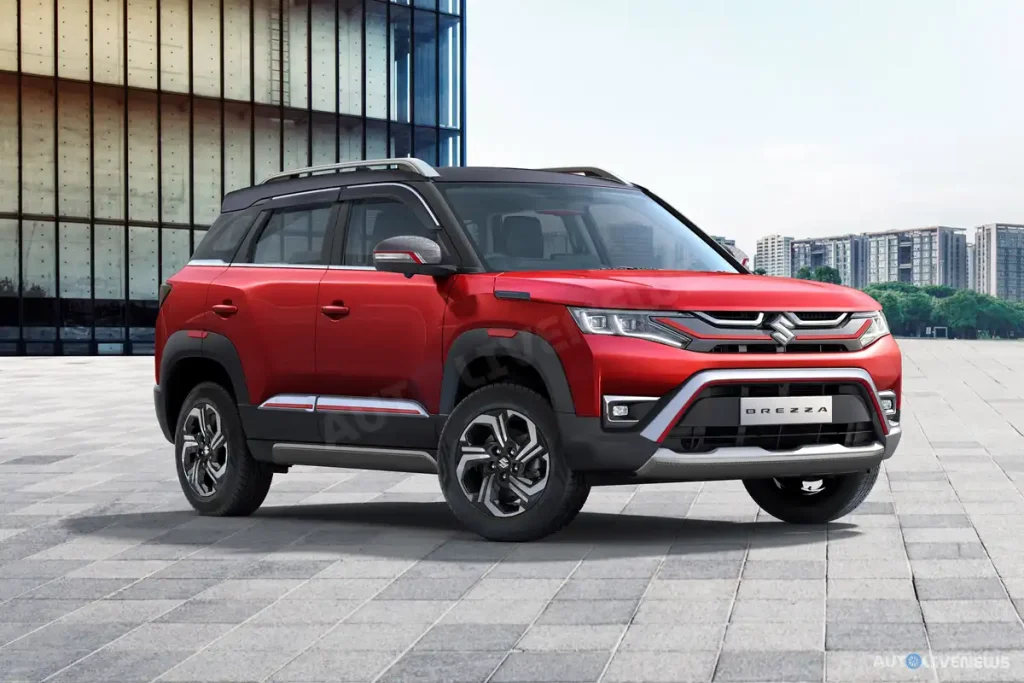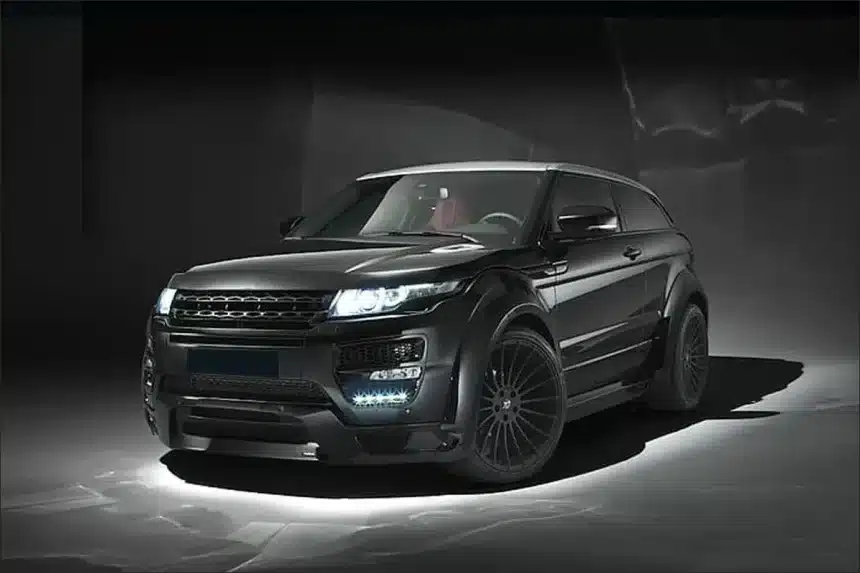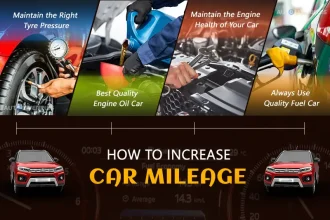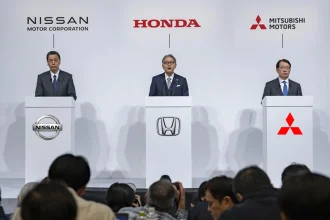An SUV, also known as a Sport Utility Vehicle, is a vehicle that is more than just a car; it is a powerhouse made to power through city traffic and even through rough terrain. Well, in its basic definition, an SUV car is any automobile that is considered a sport utility vehicle. It’s a combination of lower body structures and internal compartments as well as high-ground clearances, a union that provides the best of both luxury and robustness. An SUV car is a type of vehicle that can meet the demands of both urban driving and rugged terrain.
According to Wikipedia, an SUV combines certain features of passenger cars with those of off-road vehicles. Due to its lack of specificity, people often use the term ‘SUV’ as an umbrella term.
Traditionally, the term SUV has referred to a truck-like vehicle that has certain off-road capabilities, a high ground clearance, and comes with a 4×4. Today, these parameters are things that SUVs can come with but don’t necessarily need to include to qualify as an SUV. Furthermore, the definition of an SUV varies from country to country. Let’s answer the question ‘What is an SUV car in India?’ and also look at the types, advantages, and disadvantages of owning an SUV.
Here Are Some Types Of SUVs:
| No. | SUV Types |
|---|---|
| 1. | Compact SUV |
| 2. | Mid-Size SUV |
| 3. | Full-Size SUV |
| 4. | Luxury SUV |
| 5. | Crossover SUV |
| 6. | Subcompact SUV |
| 7. | Off-Road SUV |
| 8. | Three-Row SUV |
| 9. | Hybrid SUV |
| 10. | Electric SUV |
What Is An SUV Car In India?
While researching different cars, you may have come across the frequently-asked question, ‘What is an SUV car?’ or ‘What does an SUV stand for?’ SUV stands for Sports Utility Vehicle, but today it has a different meaning from the past due to the evolution of the global automotive industry.
SUVs in India blur the lines between crossovers and hatchbacks. Thanks to India’s taxing system that benefits small cars (more on that later), the country has been flooded with a vast array of affordable compact SUVs. This has led to an overall rise in the popularity of the compact SUV.
Today, owning an SUV is more desirable than buying sedans and hatchbacks. SUVs look larger and brawnier, have a more imposing presence, and thus look more expensive than smaller cars. This mindset has led to manufacturers marketing crossovers or even large hatchbacks as SUVs and selling these models at a higher cost.
For the first time, SUVs have become some of the top-selling cars in India. In March 2024, the Hyundai Creta and Tata Punch claimed the top two spots on the list of most-selling cars. Today, the number of people who are buying an SUV as their first car has increased from 8 to 34%. The rising status of the ‘SUV’ tag has led to the growing popularity of SUV cars in India.
What Is SUV Car Classification In India?
The Society of Indian Automobile Manufacturers classifies SUVs in India under the J segment or ‘utility vehicles’ segment.
Cars in the J segment are divided into different groups based on size and are classified into the following categories:
Sub-Compact SUV:
Subcompact SUVs comprise the smallest and most compact SUVs on the market. According to Indian car enthusiasts online, these cars barely qualify as SUVs. These SUVs can be less than 4 meters in length and carry smaller engines. Nevertheless, they offer certain SUV-like traits that make them suitable for Indian roads while also being fuel efficient.
These cars feature an SUV body type at an affordable price point. Subcompact SUVs are easy to maneuver through traffic and have relatively spacious interiors with high ground clearance. Due to this reason, this is the most competitive SUV segment in India.
Some popular subcompact SUVs in India are:

- Maruti Suzuki Vitara Brezza
- Tata Nexon
- Kia Sonet
- Hyundai Venue
- Mahindra XUV 3XO
- Kia Seltos
- Nissan Magnite
Compact SUV:
Compact SUVs are bigger than subcompact SUVs and are longer than 4 meters. They offer accommodating interiors with better headroom and legroom inside. Compact SUVs also offer more cargo space, which makes them ideal for family trips. They are also easier to maneuver than larger vehicles and are suitable for both highway and city driving with options like wheel drive.
Compact SUVs have more powerful engines and thus offer a more enjoyable driving experience. Thanks to their added tech, comfort features, and fuel economy, compact SUV cars provide considerable value for money.
Popular compact SUV cars in India are:
- Hyundai Creta
- Jeep Compass
- Nissan Kicks
- Renault Duster
According to the GST Council of India, an SUV must have a length of more than 4 meters, have an engine with at least 1,500 cc, and have a ground clearance of 170 mm or more. The Indian government imposes greater taxes on cars that meet all of the above criteria. While some media sources use the terms “subcompact SUV’ and ‘compact SUV’ interchangeably, both segments benefit from lower taxes.
Mid-Size SUVs:
These SUVs have larger proportions than compact and subcompact SUVs. They offer better interior space for passengers and cargo and come equipped with a longer list of standard features. You can comfortably cruise highways in a midsize SUV. These cars usually seat 5-8 people and come with suitably powered engines. Some even come with standard AWD.
This is a highly competitive segment in India, as it is perfectly positioned between compact and full-size SUVs. For many buyers, mid-size SUVs are a good compromise, as compact SUVs aren’t big enough for their needs, but large SUVs are out of their budget.
However, midsize segments take up more space in already congested streets and may not be as easy to maneuver and park.
Some popular mid-size SUV cars in India are:
- Mahindra XUV700
- Jeep Wrangler
- Toyota Urban Cruiser Hyryder
- Maruti Suzuki Grand Vitara
- Tata Harrier
- MG Hector
- Tata Safari
- Skoda Kodiaq
Large SUVs:
Large SUVs are much larger than other SUV segments. They feature distinct and rugged exterior styling and can usually seat between 5-7 people. Large SUVs usually come with powerful engines, as they have been designed to carry much heavier loads.
They measure close to 5 meters in length and can comfortably cruise down the highway at high speeds. However, they are out of their depth on city streets due to their bulky size. These cars may also come equipped with roof racks or have towing abilities.
These SUVs are either marketed as luxury cars or off-road vehicles. Or both, in the case of the Land Cruiser and the Mercedes G-Wagon. They are priced higher than midsize SUVs and come fully equipped with a host of comfort and safety features. They tend to have good off-road capabilities and standard driver assistance features. Most are equipped with 4x4s or AWD.
The most popular large SUVs in India are:
- Ford Endeavour
- Mercedes-Benz GLS
- Toyota Land Cruiser
- Mahindra Alturas G4
- Land Rover Defender
- Toyota Fortuner
- BMW X5
- MG Gloster
Pros Of Owning An SUV Car In India:
SUVs are one of the most popular body types in the Indian car market. What is SUV car ownership like in India? Let’s take a look at its advantages first.
Ground Clearance
What is an SUV car without a high ground clearance? Although the definition of an SUV has changed throughout the years, its higher ride height has remained constant. This is one of the main features that makes SUVs extremely desirable in India. Indian roads are often of poor quality, with barely-legal speedbumps and large potholes.
Cars with lower ground clearance don’t fare well here, as the underbody of the car may scrape against speedbumps and rocky roads. Not only does the SUV’s higher ground clearance solve that problem, but it also provides a more cushioned ride as the passengers aren’t seated as close to the ground.
Travel Together
Generally, Asian countries value community over individualism. We are often part of closely knit communities and large groups. We’re rarely traveling alone, and SUVs are great for those who like to travel with family and friends—maybe even both.
Most SUVs are offered with three or four rows in India. These are a practical choice for both small and large families. SUVs are also great for people with pets. Even though a hatchback or a sedan might easily seat 4-5 people, it might not be able to carry a lot of luggage. So Indian buyers prefer buying an SUV for the same purpose, as it offers more passenger and cargo space. There’s a lot more legroom and headroom in SUVs than in other cars.
Spacious Interiors
SUVs offer spacious interiors, as they are usually bigger than sedans and hatchbacks. The non-sloping roof doesn’t restrict headroom and provides comfortable seating even over long distances.
Greater Visibility
SUVs have a higher ride height than other cars on the road. This bestows the driver with greater visibility and allows them to survey their surroundings more easily. This is convenient during traffic and while driving on rough roads, as the driver can easily observe the road and the vehicles close to them.
Practicality and Utility
SUVs are highly practical for people who travel a lot. They offer a lot of space for people, cargo, and everything else. You can carry sports equipment and luggage for long trips, conveniently stow away a bicycle or electric scooter, and use your SUV for commutes as well as intercity travel.
Carpool with coworkers or give all of your friends a ride home in your three-row SUV. If you have to carry items for work, an SUV will provide you with a huge amount of cargo space. If you like taking trips frequently or going camping, you can keep all the necessary equipment in the car, and it’ll stay out of the way until you need it. Since an SUV provides a high degree of convenience, it can save you a lot of time and effort and make life much easier.
Versatility
SUVs are offered in many different shapes and sizes. So you can buy an SUV that caters specifically to your requirements. If you want a small commuter car with good mileage, a subcompact Brezza will do the trick. If you want a fun-to-drive SUV, there are quite a few midsize SUVs that offer sporty and zippy performance.
Whether it’s a large, tough SUV that’ll take you anywhere or a compact one that is easy to drive and park, you can choose from a long list of car makes and models.
Cons of Owning an SUV Car in India:
Every car body type is designed for a different purpose. Even owning an SUV offers certain disadvantages.
Low Fuel Efficiency
This one is self-explanatory, but we’ll explain how anyway. When a car is heavy and has a sharp, boxy design, it has a higher drag coefficient and is slowed down by wind resistance. To combat this, the car’s engine will need more fuel to keep it running. Typically, the bigger and brawnier the SUV, the worse its fuel efficiency will be.
Even compact SUVs burn more fuel than sedans and hatchbacks of the same size.
Environmental Impact
As SUVs consume more fuel than other cars of the same size, they emit more CO2 into the environment and thus cause more harm to the planet. SUVs are the second-largest cause of CO2 emissions in the world. Environmental groups in Scandinavian countries have reportedly protested against the rising number of SUVs in cities.
The Hummer H2 is one SUV that had to be discontinued due to many reasons, but the most pressing was its incredibly non-eco-friendly fuel consumption. Thankfully, modern-day manufacturers are trying to design lighter and more aerodynamic SUVs. Stricter emission regulations have also led to some changes, but the SUV still uses more gas than other cars, and that is an unfortunate fact.
Tricky Handling
Everyone loves a big, tough-looking SUV that looks like it could take you anywhere. But looking like it and being able to do it are two different things. Even SUVs built for city use get a big and beefed-up body, which makes them harder to maneuver and handle. Moreover, the bigger the SUV, the more ridiculous the turning radius.
Obviously, a 4×4 off-roader isn’t going to give you smooth and easy handling. But many midsize SUVs possess no off-road ability and are still stiff and tricky to drive on congested roads and narrow streets.
High Cost of Ownership
You may be wondering, ‘What is SUV car ownership and maintenance like in India?’ Well, it is expensive. As SUVs are heavier than other vehicles and burn more fuel, all their parts, like suspension, brakes, and transmission, have to handle more pressure and may break down faster.
Due to this, you’ll find yourself replacing spare parts like tires very often. And if you buy an off-road SUV, those parts can be pretty expensive. Thus, the durability of an SUV comes at an added cost.
Choose the Right Structure:
Monocoque SUVs
SUVs with monocoque or unibody architecture are easier to drive. They are lighter, which not only helps you turn corners with ease but also vastly improves mileage and performance. Their superior handling also makes them safer, as it minimizes the risk of rollovers.
The vehicle floor is lower to the ground, so getting in and out is easier. A monocoque or unibody car can be very fun to drive. Moreover, they offer a more comfortable ride. Last but not least, you’ll have way more options to choose from, as most SUVs on the market utilize this body structure.
Body-on-frame SUVs
On the other hand, body-on-frame, or BOFs, are much tougher and possess greater off-road capabilities. These SUVs generally come with AWD instead of the FWD options available with monocoque SUVs. As they have a separate body and frames, they are easier to repair, replace, and modify. They are highly durable and thus even restoration becomes much easier.
The Mercedes-Benz G-Wagon and Mahindra Thar are body-on-frame SUVs. These have a powerful and rugged road presence. They can carry huge amounts of luggage and a lot of people can too. Body-on-frame SUVs are better at handling tough off-roading situations.
Which Should You Choose?
So which type of SUV is the one for you? The answer depends on what you plan on using your car for.
City travels and work commutes? Pick up a unibody SUV. These will cruise city streets with ease and can even handle inter-city travel and some long-distance traveling.
Serious off-roading? Get a body-on frame. While some novice off-roaders may find success with a monocoque vehicle such as the new Land Rover Defender, most off-roading and camping vehicles adhere strictly to the body-on-frame design. You need that 4×4, robust, and durable SUV to travel through rough terrain.
If you buy a body-on-frame only for city use, you’ll end up being solely disappointed. A Thar, for example, is bulky. It’s not very fun to drive on paved roads and your mood will sour every time you turn a corner. Yes, body-on-frame cars can be used in cities, but they perform best when used off-road, for touring, carrying lots of luggage, and on bad roads.
That being said, off-roading doesn’t refer to only driving on poor roads. Unless you plan on driving on rocks and sand and wading through water, a monocoque should serve you well. Nowadays, unibody SUVs have been designed to offer a good amount of durability and even some off-road specs. They are the ideal choice if you want a robust car for city use
Frequently Asked Questions:
Which is the best SUV in India?
Some popular and best-selling SUVs in each size segment are:
Subcompact: Maruti Suzuki Vitara Brezza, Tata Nexon, Tata Punch
Compact: Hyundai Creta, Renault Duster
Midsize SUVs: Maruti Suzuki Grand Vitara, Mahindra XUV700
Large SUVs: Land Rover Defender, Tata Harrier, and Toyota Fortuner
What is the full form of SUV?
SUV stands for ‘Sport Utility Vehicle’. In the late 1980s, the term began to be widely used.
Which SUV has the best mileage?
The Tata Nexon, Hyundia Creta, Kia Sonet, and Volkswagen Taigun are some of the SUVs with the best mileage in India.
What is SUV car ground clearance like?
Most SUVs have a ground clearance of at least 170 mm. Some high-performance off-road SUVs offer higher ground clearance, ranging from 200 to 230 mm.
What is SUV car meaning?
An SUV is a category of car that has characteristics of a standard car and that of a truck, abbreviated from Sport utility Vehicle. SUV yet is look on as medium of comfort, performance as well as multifunctional car use viable for urban and extra city robust terrains.















